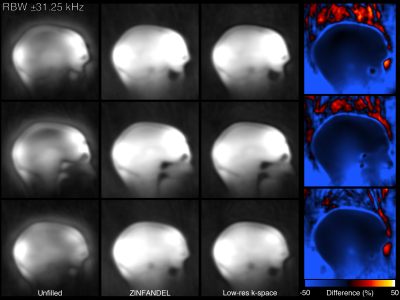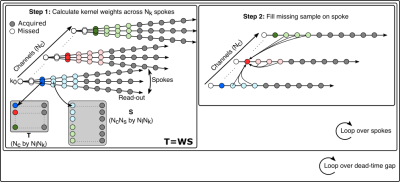Tobias C Wood1, Emil Ljungberg1, and Mark Chiew2
1Neuroimaging, King's College London, London, United Kingdom, 2Wellcome Centre for Integrative Neuroimaging, FMRIB, Nuffield Department of Clinical Neurosciences, University of Oxford, Oxford, United Kingdom
1Neuroimaging, King's College London, London, United Kingdom, 2Wellcome Centre for Integrative Neuroimaging, FMRIB, Nuffield Department of Clinical Neurosciences, University of Oxford, Oxford, United Kingdom
We present a method for filling the dead-time gap in ZTE imaging using a parallel imaging technique. We present results in phantoms and a human brain demonstrating high fidelity reconstructions comparable to existing methods that require collection of additional data.


